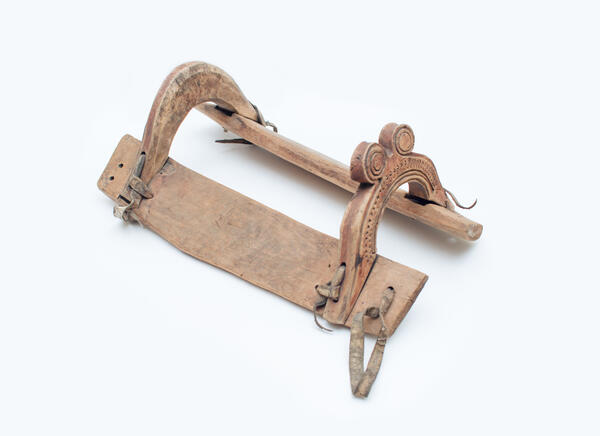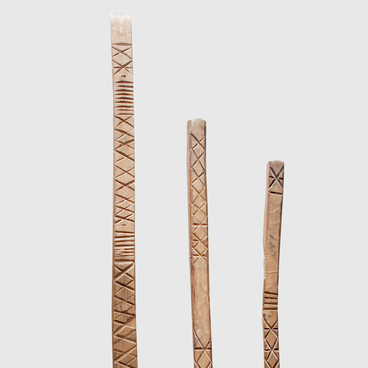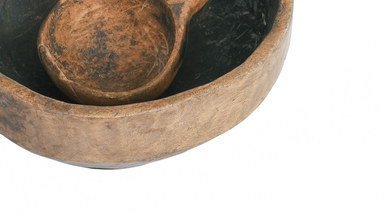The Tuvans domesticated cattle a long time ago. Highland areas in the Todzhinsky and Tere Khol districts with large reserves of mosses and lichens were excellent pastures for reindeer. According to scientists, the inhabitants of Tuva were already engaged in reindeer herding at the beginning of our era.
Reindeer were indispensable in the local household. They helped people to carry goods, hunt, as well as provided them with deer milk and meat.
The nomadic type of reindeer herding, which was called ‘Sayan’, characterized the eastern Todzhan Tuvans. During the development of large hunting grounds, Tuvans used animals as means of transportation: in winter, one saddled reindeer could walk about 60 kilometers a day and carry more than 40 kilograms of cargo at the same time. Still, during the snowy season they were usually harnessed to sledges.
Reindeer did not require much care. They ate pasture both in summer and winter, and hay was prepared for them in advance, which was arranged in bundles on trees to dry. The animals were tamed by giving them salt, which was specially brought from afar for this purpose. The feeding was done mainly by Todzhi women. Young deer were kept for two months in the yurts under special sheds made of larch branches.
Men had to saw off upper branches of horns in time so that it was easier for reindeer to move along narrow taiga trails.
In summer, reindeer were saddled, just like bulls. For this, a special pack-saddle — yngyrzhak — was made of birch wood. The reindeer saddle, which is kept in the museum, consists of two oblong planks. They were fastened together with horn or wooden shackles — pommels. The saddle was secured to the deer by a single girth, a special strap that was tightened under the belly. The saddle had no stirrups.
In addition to the pack saddle, Tuvans had two other types of saddles: a horse saddle and a children’s saddle. A riding saddle was created in the same pattern as horse saddles and was fastened sometimes in the same way — in the middle of the back. But such way of fastening was dangerous for deer and sometimes even led to their death. A deer has a much stronger front girdle, so it was better for a saddle to be fastened on shoulder blades.
The second type of saddle — a children’s saddle — was a more complicated version of a pack saddle. Similar saddles were also common among the Kazakhs and Kirghiz.
Reindeer were indispensable in the local household. They helped people to carry goods, hunt, as well as provided them with deer milk and meat.
The nomadic type of reindeer herding, which was called ‘Sayan’, characterized the eastern Todzhan Tuvans. During the development of large hunting grounds, Tuvans used animals as means of transportation: in winter, one saddled reindeer could walk about 60 kilometers a day and carry more than 40 kilograms of cargo at the same time. Still, during the snowy season they were usually harnessed to sledges.
Reindeer did not require much care. They ate pasture both in summer and winter, and hay was prepared for them in advance, which was arranged in bundles on trees to dry. The animals were tamed by giving them salt, which was specially brought from afar for this purpose. The feeding was done mainly by Todzhi women. Young deer were kept for two months in the yurts under special sheds made of larch branches.
Men had to saw off upper branches of horns in time so that it was easier for reindeer to move along narrow taiga trails.
In summer, reindeer were saddled, just like bulls. For this, a special pack-saddle — yngyrzhak — was made of birch wood. The reindeer saddle, which is kept in the museum, consists of two oblong planks. They were fastened together with horn or wooden shackles — pommels. The saddle was secured to the deer by a single girth, a special strap that was tightened under the belly. The saddle had no stirrups.
In addition to the pack saddle, Tuvans had two other types of saddles: a horse saddle and a children’s saddle. A riding saddle was created in the same pattern as horse saddles and was fastened sometimes in the same way — in the middle of the back. But such way of fastening was dangerous for deer and sometimes even led to their death. A deer has a much stronger front girdle, so it was better for a saddle to be fastened on shoulder blades.
The second type of saddle — a children’s saddle — was a more complicated version of a pack saddle. Similar saddles were also common among the Kazakhs and Kirghiz.



